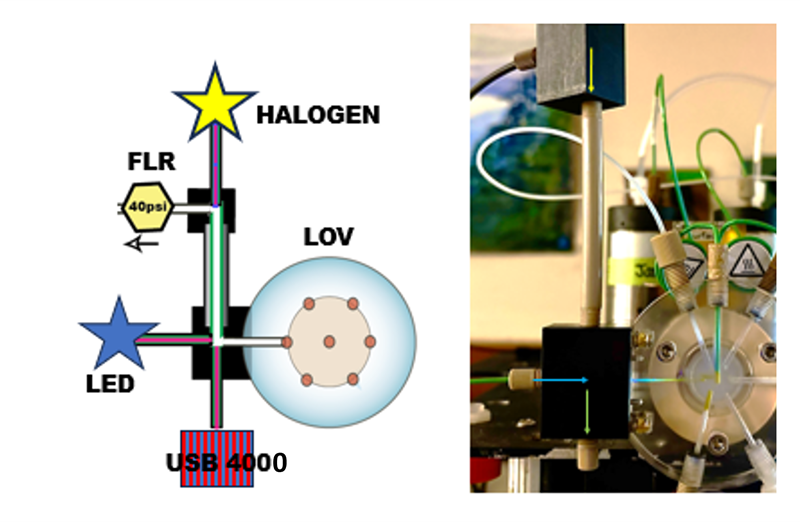3.2.8.1. Introduction
Monitoring of fluorescence and absorbance is performed by different instruments because photomultiplier based monitoring (PMT) of fluorescence is more sensitive than by charge coupled detectors (CCD). However, advances in CCD technology and software reduced this gap in performance so that equal sensitivity can be obtained by increasing integration time while the background noise is reduced. This offers opportunity to integrate both techniques into single instrument, which, for flow based determinations, must be furnished with a hybrid flow cell that will accommodate monitoring of fluorescence and absorbance. The main advantage of this configuration is that CCD monitoring yields in real time not only fluorescence intensity at wavelength selected by software but also spectrum showing excitation and emission intensities. Construction of hybrid fiber optic flow cell (HFC) is described in this Technical Note, along with its performance when coupled with USB 4000 uv-VIS Ocean Optics Spectrophotometer, LED, and Tungsten light sources and integrated with miniSIA2 instrument by Global FIA.
Concept
Hybrid flow cell mounted on LOV module and monitored by CCD Spectrophotometer is the key component of a multipurpose miniSIA2 instrument designed to automate reagent-based assays by programmable Flow Injection.
The bottom part of HFC, when used in fluorescence mode, is illuminated by high-intensity LED of appropriate excitation wavelength, while its top extension (10cm long), when used for absorbance measurement, is illuminated by tungsten/halogen lamp. The spectrophotometer (USB 4000 UV-VIS Ocean Optics) can be programmed to function either in fluorescence or in absorbance mode. Surprisingly, combination of high intensity LED with appropriate spec. programming yields the same sensitivity as PMT detection, albeit with advantages of providing spectra and avoiding necessity of using optical filters.

The purpose of this Technical Note is to provide information how to construct and test this novel tool, where positioning of ends of optical fibers and of green PEEK tubing, serving as a body of long light path flow cell, is critical. Autocalibration by fluorescent and light absorbing dyes is used to document efficiency of HFC.
Additional information on application of HFC is available in Tutorial on:
Determination of Aluminium by fluorescence
Determination of Silica and Manganese by absorbance
Construction of long light path flow cell.